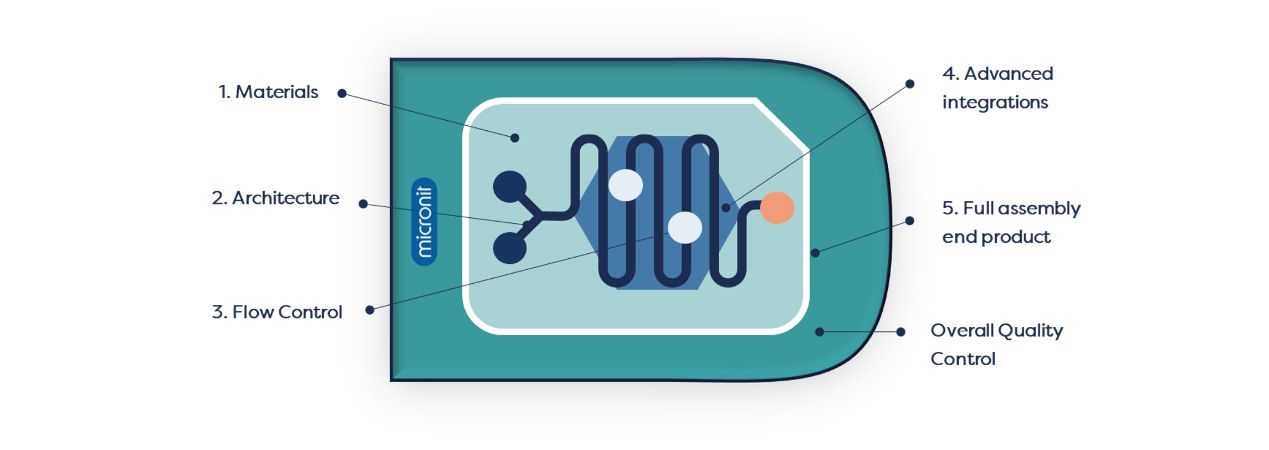Microfluidics finds its applications in diverse fields such as chemistry, biology, physics, engineering, and medicine. The field of microfluidics is broadly divided into three categories based on the nature of the application.
-
Analytical microfluidics: This category includes applications that use microfluidics for chemical and biochemical analysis, such as separation, mixing, detection, and quantification of analytes. Examples of analytical microfluidic devices include Genomic Analysis and Proteomic Analysis with microfluidic flow cells and Cell Analysis and Sorting.
-
Diagnostic microfluidics: This category includes applications that use microfluidics retrieving diagnostic answers from small samples. Examples of diagnostic microfluidics: Point-of-care Diagnostics, Environmental Monitoring, Food Safety Testing.
-
Biomedical microfluidics: This category includes applications that use microfluidics for biomedical research and clinical applications, such as cell culturing, drug delivery and organ-on-a-chip. Examples of biomedical microfluidic devices include microfluidic cell sorting devices, microfluidic tissue engineering, and microfluidic spray nozzles.
-
Chemical Synthetic microfluidics: This category includes applications that use microfluidics for the synthesis and production of materials and compounds, such as nanoparticles, emulsions, and microspheres. Examples of synthetic microfluidic devices include microfluidic bio-reactors and microfluidic droplet generators.
Understanding microfluidic products begins with comprehending the basic principle of microfluidics.

